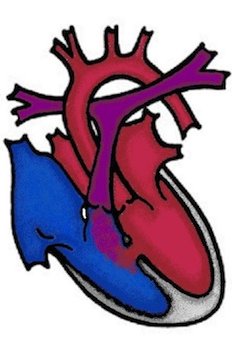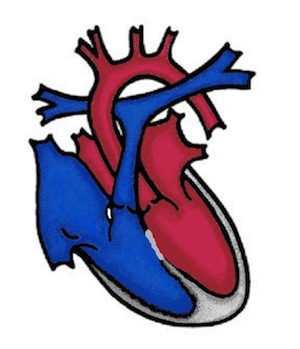The ventricular septal defect (VSD) is a hole in the ventricular septum between the heart chambers. The septum consists of a membranous and a muscular part. Depending on the location of the hole, a distinction is made between perimembranous and muscular VSDs.
What are the effects of a VSD?
Ventricular septal defects are the most common congenital malformation of the heart. They are usually small holes in the muscular part of the ventricular septum, which cause a heart murmur but do not affect the circulation. The defect creates a short circuit through which oxygen-rich blood passes from the left ventricle to the right ventricle (left-to-right shunt). - The right ventricle in particular has to pump more blood volume, which increases the blood flow to the lungs. In the case of very large defects, the blood pressure in the lungs is also increased.
Symptoms
While a small VSD does not cause any symptoms apart from a heart murmur, large defects cause the clinical symptoms of heart failure. In infants, this manifests itself in increased sweating, rapid breathing, drinking difficulties and a lack of weight gain. Older children who cannot be treated in time may even develop (cyanosis)and Eisenmenger's -Syndrom They can then no longer be operated on.
How is a ventricular septal defect treated?
No therapy is necessary for small holes; the defect often closes spontaneously.
If the circulation is under strain (hemodynamic effectiveness), surgical closure is necessary. Depending on the size, the defect is closed directly with a suture or with a patch.
Alternatively, in selected patients, both perimembranous and muscular defects can be closed by implanting an umbrella using a cardiac catheter. In infants, this may be performed as a hybrid procedure together with the surgeon.
Endocarditis prophylaxis is no longer recommended for this simple heart defect. The surgical risk is generally considered low and patients are considered cured after the procedure.

